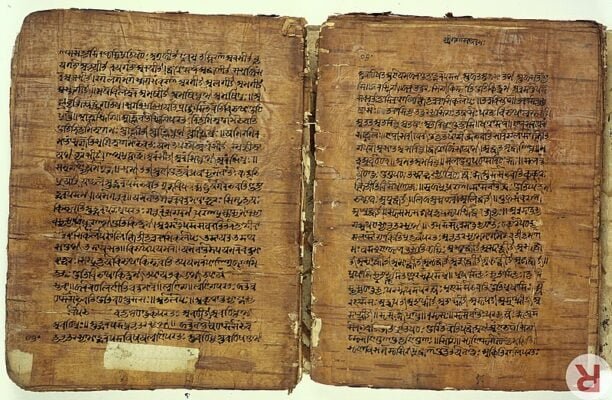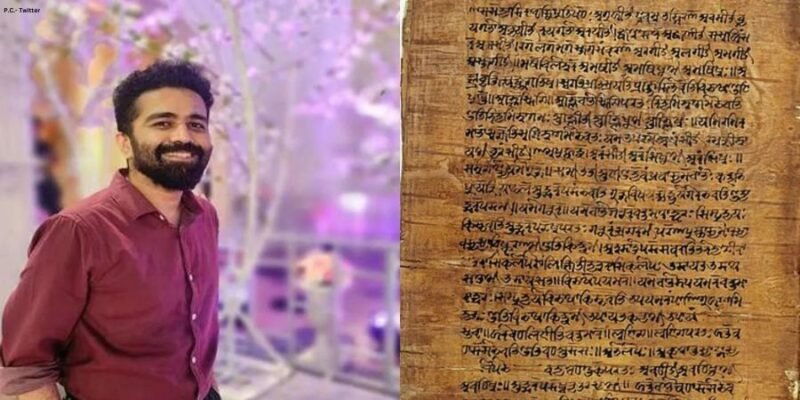A Sanskrit puzzle, the Panini Code, that has vanquished scholars for centuries was resolved by an Indian student who became renowned for being the Sanskrit grammar problem solver and has been in the spotlight for his impeccable smart and unique ways of solving the puzzle.
Rishi Rajpopat, a 27-year-old Ph.D. candidate at Cambridge University, made a breakthrough with his thesis to solve the perplexing puzzle.
Around the sixth or fifth century BCE, the grammarian, philologist, and scholar Panini created the Sanskrit linguistic algorithm. Following centuries, it has now been resolved, but what makes the Panini code unique, and what is the legacy behind it? Mad4India brings you the story of Rishi Rajpopat—the Sanskrit grammar problem solver, as we all now know him!
Panini Code – The 2,500-Year-Old Sanskrit Puzzle

An eminent Sanskrit grammarian, philologist, and scholar named Panini lived in India around the fifth century BCE.
Since his work was discovered and published, he has gained recognition among academics in Europe and has been dubbed “the father of linguistics” and the “first descriptive linguist.”
The “Ashtadhyayi,” a linguistics text that was written more than 2,000 years ago, established the norm for how Sanskrit should be written and spoken. In addition to providing a “language machine” that allows you to enter the root and suffix of any Sanskrit word and receive grammatically sound words and sentences in return, it delves deeply into the phonetics, syntax, and grammar of the language.
Because of the complexity of the text, scholars and many Sanskrit grammar problem solver have spent hundreds of years figuring out how to apply its rules and mechanics.
In simple terms, Panini’s most significant work is the Astadhyayi. It is a grammar that defines the ancient language of Sanskrit. It has 8 chapters and 3,959 sutras (aphoristic threads). These chapters are divided into four sections for each chapter. Rishi Rajpopat deciphered the 2500-year-old puzzle and made an immaculate publication on how Sanskrit grammar is to be used. The revolutionary act was performed by the Sanskrit grammar problem solver.
Scholars of other Indian religions, such as Buddhism, were influenced by and commented on his ideas.
Rishi Rajpopat – the Sanskrit grammar problem solver, had a “eureka moment” when he racked the Panini, which is a text Aṣṭādhyāyī, a sutra-style treatise on Sanskrit grammar.
It was a legacy trapped in a treasure box. Many Sanskrit grammar problem solvers and titled scholars attempted to interpret this text by determining its generative use, but they were unsuccessful.
Sanskrit Grammar Problem Solver: Rishi Rajpopat

Mumbai-born, 27-year-old Rishi Rajpopat made the breakthrough by decoding a rule taught by the “father of linguistics,” Panini.
A set of 4,000 rules dictating its logic were written by Panini. But as researchers examined it, they discovered that several of the rules could apply simultaneously, which led to uncertainty. Panini had offered a “meta-rule” (a rule governing rules) to address this, and it had historically been interpreted as :
‘In the event of a conflict between two rules of equal strength, the rule that comes later in the serial order of the ‘Ashtadhyayi’ wins’.
But as the Sanskrit grammar problem solver interpreted this, it concluded that it was not solving the issues, instead creating more exceptions. Throughout the years, this led many scholars to create additional rules. And this is where 27-year-old Rishi Rajpopat’s discovery.
The young man, from Cambridge University, published in his thesis the possibility of using the language machine. The two-and-a-half millennia-old algorithm has accurately diffused its use with no exceptions.
The Indian Ph.D. scholar at Cambridge encapsulated this in his thesis, entitled ‘In Panini, We Trust: Discovering the Algorithm for Rule Conflict Resolution in the Astadhyayi.” It has made it possible, for the first time to use the “language machine.”
“I had a eureka moment at Cambridge!”
— Cambridge University (@Cambridge_Uni) December 15, 2022
The world’s greatest grammatical puzzle that had defeated scholars for centuries has been cracked by #Sanskrit PhD student @RishiRajpopat.
Read how he did it 👇@stjohnscam @CambridgeFames @HCI_London
It took Rishi about nine months to decode this problem. The young lad’s hard work and sleepless nights are extraordinary and revolutionary to us. There was a moment of discouragement, and he was on the edge of quitting this research, but something kept him going. He realized he could be the Sanskrit grammar problem solver as things began to make sense and patterns emerged.
Rishi Rajpopat has churned out the legacy of philologist Panini, and it seems that Panini’s system can now be used to create millions of Sanskrit words thanks to the discovery. Because his grammar rules are precise and formulaic, they can now be used in computers as a language algorithm.
It sure is an astonishing moment, and Mad4India wishes warm evolution to this Panini code and hopes to see more discoveries of Sanskrit grammar problem solver – Rishi Rajpopat.
Feature Image – Twitter & Wikipedia
To know more about Rishi Rajpopat, please check – Twitter
If you liked reading this story, you can also read about This Man Made Gold Out Of Banana Leaf- One Of The Most Inspiring India’s Youngest Scientists, Gopal Jee
If you know more inspirational stories about any person, company, new idea, or social initiative, write to us at mad4india.com, or share such information with us on Facebook, LinkedIn or Instagram



